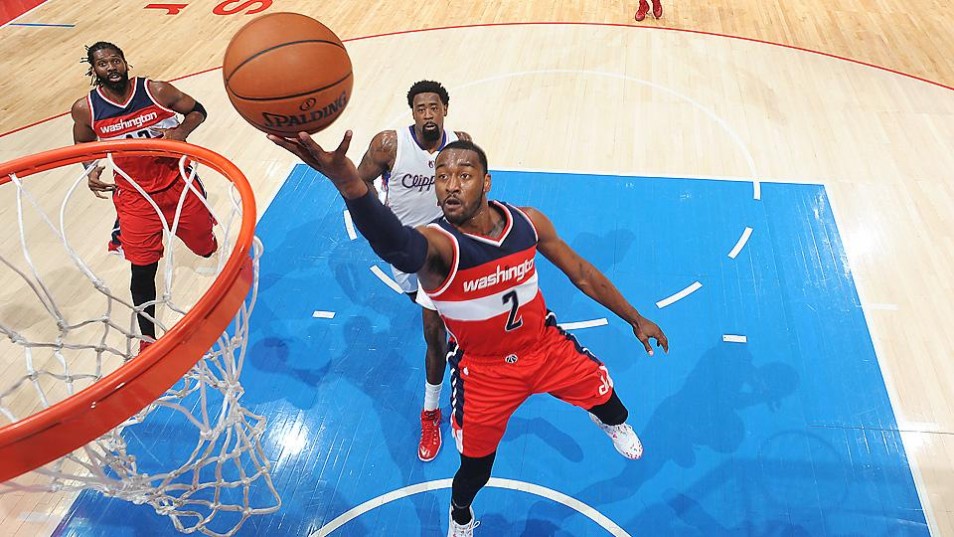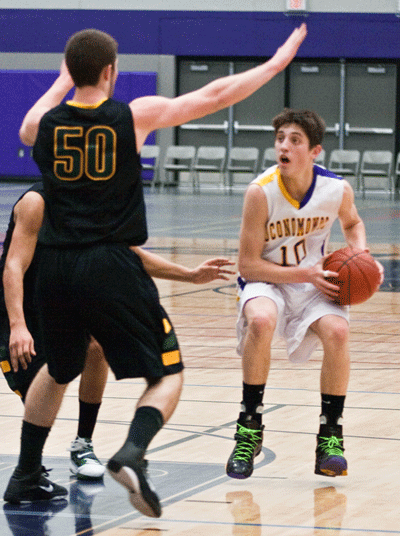When working on the various type of lay-ups and finishing moves, I spend a quite a bit of time teaching basketball players how to utilize two foot take-offs as an important part of their offensive footwork toolbox. (PGC Basketball calls two-foot finishing moves “dynamic jump stops”. That is, ending your forward movement by landing with both feet hitting the floor at the same time.)
When teaching it to athletes, I’ll also refer to them as “one sound stops” as this is a more visceral cue and makes better sense to some athletes; whereas, “…just take off on two (feet)”, speaks to a different type of learner.
Hopefully, everyone can picture what I’m describing.
Why is this deserving of a post? Well, coaches often look at me dumbfounded or quizzically when I suggest that the ability to finish off of two feet is an advanced technical skill.
A lot of basketball coaches ask “Why?!”. Others, surprisingly, have gotten demonstrably upset and frustrated with the notion. One coach adamantly claimed that top athletes “never” take off on two feet when finishing a lay-up. Well, that one really got me to scratch my head. “Never!” I thought (smiling inside).
The only absolute in basketball is: high score wins.

1. Fundamental Movement Skills
The ability to go fast and stop under control is a skill. Body control has to be developed in all athletes beginning in youth basketball. If the only – technical – movement pattern that an athlete ever has ingrained in them is a one foot take off (as in traditional layup), then we, as coaches, have severely limited their performance potential. Jumping off of two feet is just as important to basic physical literacy as the ability to jump off of one.
2. More Tools In the Tool Belt
We have an onus to put basketball players in a position to obtain as many weapons in their skill arsenal as possible. Watch your typical lay-up line at the next basketball game you attend—even at the college and professional level. What I think you’ll see is a lot similar to what I’ve observed… 1-foot take-offs. So, without a doubt, that’s what you’ll see in the game.
Skilled basketball players have more than one option available to them—especially when finishing around the basket. When an athlete can also come to a jump stop, they have waaaaaay more than just power lay-ups available to them.
To name a few… stretch moves, duck unders, opposite-hand / opposite-side, and end of dribble moves (and there are many!). Not to mention, if athletes are taught now to ‘combinate’ those moves with use of pass fakes and shot fakes, then, as we from the Commonwealth like to say: “Bob’s Your Uncle!” (I let that axiom slip in Texas one summer and my friends from the Great State never let me live it down. Ha!)
3. Slows ‘Em Down for Decision Making

When I’m working on decision making where the ball handler has to read the second line of defense, requiring a two-foot jump stop slows the athletes down. It slows them down, enough, such that they have the time and space to see oncoming defenders.
You see, young, long and athletics kids, in addition, small and quick kids, will get into their two strides for a one-foot take off (i.e. standard lay-up) between the three point line and foul line. As such, they’re rarely forced to play at a speed that will allow them to go through the decision making reads that all players need to learn to be successful.
4. Control
Not only do refs love and reward control, but great players take pride in demonstrating it, constantly. Jumps stops allow a basketball player to absorb and play through contact; whereas, when most athletes get hit or bumped on a one-foot move, they get jostled off their line of attack resulting in a lower percentage, often off balance, shot.
Ideas, just ideas… Coach creatively.
/sef.